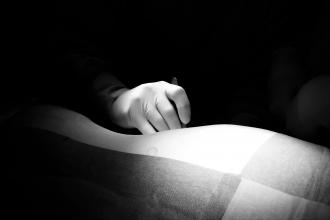Yukon trapper manages dialysis at home
Last July Gerry Couture, a 70-year-old trapper and pilot from the Yukon, became seriously ill while on a fishing trip with his family. At hospital in Whitehorse the local doctor discovered Couture had a serious kidney problem and put him on a plane to Vancouver to be seen by a nephrologist.
In Vancouver it was found that Couture’s kidney failure was caused by Goodpasture’s syndrome, and he was immediately put onto hemodialysis. As there are no hemodialysis clinics in the Yukon, he spent the next 4 months receiving hemodialysis treatment in Vancouver, wondering whether he would ever return to his home in the north.
His chance to return came through a home hemodialysis program offered through the BC Renal Agency. The program provides the training and equipment required for people with end-stage kidney disease to do their own dialysis at home. The agency’s home hemodialysis program is the largest of its kind in Canada and currently supports 145 people on home hemodialysis across BC.
Today Couture is the only Yukoner and the most remote participant in the BC Renal Agency’s home hemodialysis program. He spends 6 nights every week hooked up to a hemodialysis machine that filters his blood while he sleeps. With 2000 kilometres between Couture in his Dawson City home and his kidney care team in Vancouver, there is little room for error. For that reason he has two hemodialysis machines, to ensure one is always available as a backup.
“I can’t imagine Gerry living anywhere but in the Yukon, and it was very satisfying to provide him with a treatment option that allows him to stay there and in fact to thrive,” says nephrologist Dr Mike Copland, provincial medical director of the BC Renal Agency’s home hemodialysis program. “Studies show that patients on home hemodialysis have better health outcomes than patients who visit clinics for their hemodialysis, so in many ways he’s getting the best treatment possible.”

